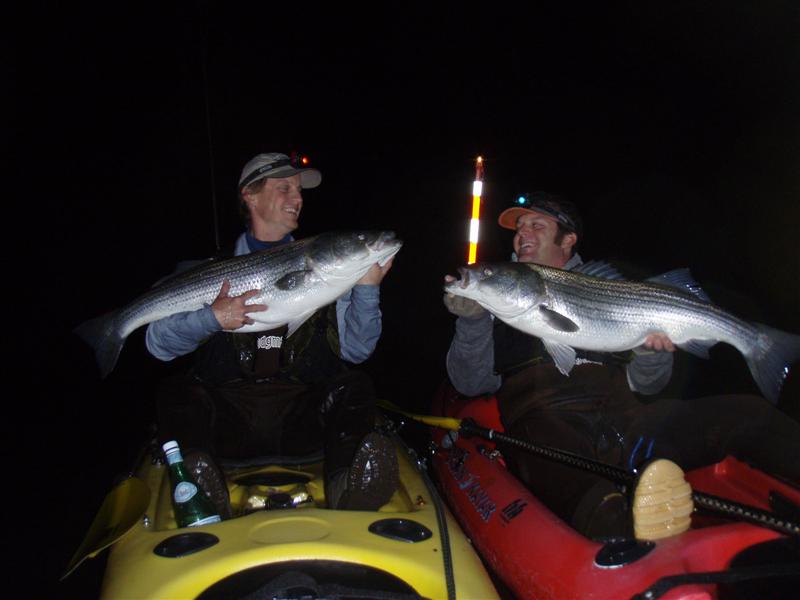Bad news for striped bass
It seems that in spite of record numbers of spawning-size striped bass in the Hudson River last spring, the young of the year numbers were just as dismal as they were in Chesapeake Bay. In an article by Jim Hutchinson in New Jersey Fisherman Magazine, he reported the young of the year count for the Hudson River was the lowest since the 1980s. In reading the graph, I would say it was between a one and a two.
New York samples 13 sites biweekly along the lower Hudson River from May until November. These dismal numbers track right along with the numbers reported from Maryland and Virginia.
It seems, according to the Maryland Department of Natural Resources, that recent winters have been warm and dry with little snowfall. This has resulted in less snowmelt to cool the rivers and streams where striped bass spawn. The warmer water does not produce the number of zooplankton the striped bass fry need to survive. Even if the fish produce plenty of young stripers, there would not be enough food for them to eat. Also, in Chesapeake Bay, blue catfish have become so numerous that they have become a danger to the fry and can eat great numbers of them in the spring when other food sources are not available.
None of this information is good news for striped bass. While it is true we have had long runs of poor production in the past followed by large year classes that carried us through another period of poor reproduction, this time the reasons for the down slope are troubling.
Warm winters with a lack of snowfall are not going to go away. They are a result of climate change caused by an abundance of carbon dioxide in the air. The CO2 is a result of burning fossil fuel, and we won’t wean ourselves off of that for many years. On top of that, it seems striped bass are moving north. There are more spawning-size females in the Hudson River every year and fewer in Chesapeake Bay. I think this is due to the warmer water in the south and cooler water in the north. We have seen southern fish such as sheepshead, triggerfish, spadefish and pompano move into our waters, so why should we be surprised when striped bass move to the north?
The Atlantic States Marine Fisheries Commission has already placed emergency regulations on striped bass with a 28- to 31-inch slot limit for stripers caught from the ocean. They will meet again later in January, when I expect that regulation to become permanent.
From what we saw this fall and early winter, there are plenty of big striped bass stretched from northern New Jersey all the way down to Virginia Beach. I was getting reports with photos from all of these locations at the same time. That ended about two weeks ago when this series of storms and cold temperatures arrived. It will be interesting to see if any remain once the weather settles down.
There is so much we have learned about striped bass in recent years. We believed they stayed close to the coast during their migration north in the spring and south in the fall. Recent tagging results prove some of them go as far east as the Hudson Canyon once they leave the Hudson River, and then they hang out on the Nantucket Shoals during the summer. Others do stay closer to shore. There is so much more we have to learn.
Newton Pond
The Delaware Department of Natural Resources and Environmental Control has announced the closure of Newton Pond for the construction of two 120-foot-long aluminum fishing piers that will be installed parallel to the shoreline to allow for better access to the pond for trout and other fishing. Currently, the steep banks must be overcome to access the water. The new piers will make access in this area much easier, especially for us old folks.
Construction began Dec. 26 and is expected to be complete by Feb. 14. If weather delays slow construction, the job will be done in time for the opening day of trout season March 2.
If you have fished Newton Pond, you know how steep the banks are and how difficult it can be to fish from them. I can only fish from the one pier that is available and have had very poor results from that spot.
Having two more piers along the banks will be a great help for everyone who fishes there.





















































